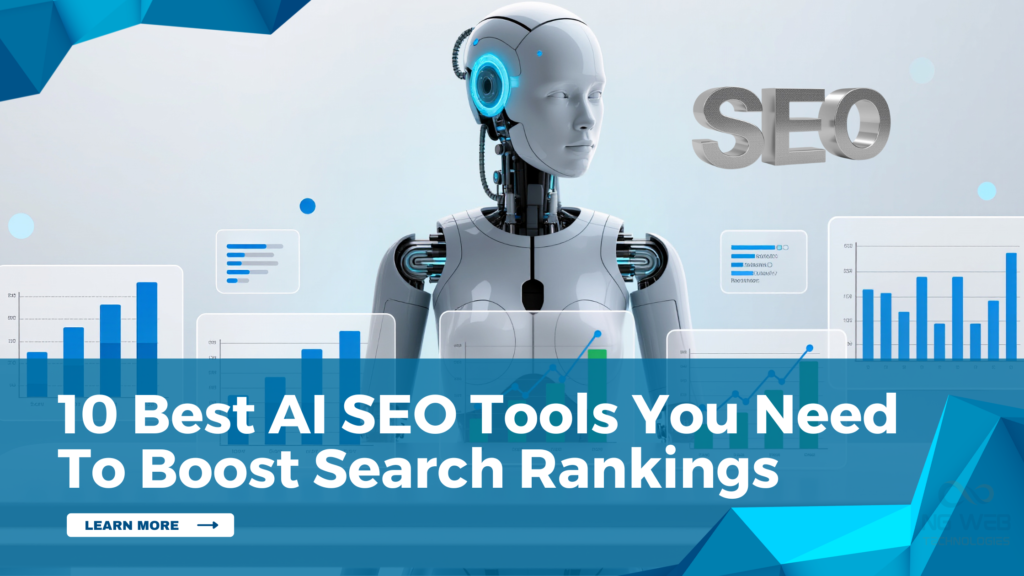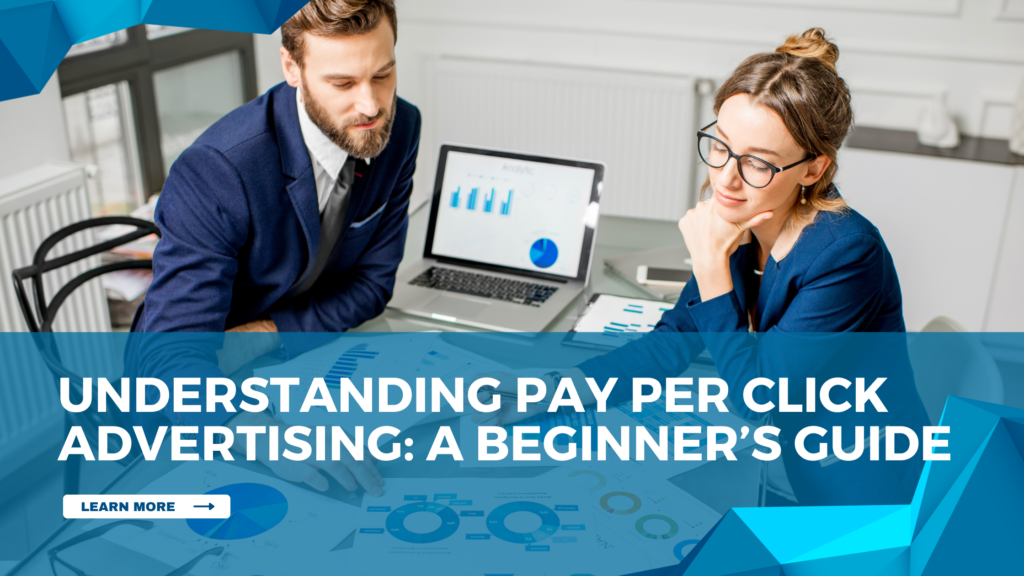
You may have this question: Isn’t SEO enough? Why spend money on PPC ads?
Well, SEO is important for long-term visibility, but PPC (Pay-Per-Click) advertising gives you immediate results.
It puts your product or service right in front of the people who are already searching for it.
Whether you’re a freelancer, a startup founder, or running a local business, this blog gives you a step-by-step understanding of PPC and how to get started effectively.
What is PPC and How Does it work?
PPC stands for Pay-Per-Click. It means you only pay when someone clicks on your ad. These ads usually appear at the top of search engines like Google or Bing.
Tip:
Start with Google Ads, the most popular PPC platform. You can show your ads to people based on keywords, location, device, and more.
Choose the Right Keywords
Don’t just guess what people might search. Use keyword tools like Google Keyword Planner or Ubersuggest to find high-intent, low-competition keywords.
Tip:
Target long-tail keywords like “affordable laptop repair in Coimbatore” instead of just “laptop repair”.
Example:
A repair shop in Coimbatore switched to long-tail keywords and noticed a 2x increase in ad conversions at half the cost.
Explore Different Types of PPC Ads: Grow Your Business with Targeted Campaigns
1. Search Ads:
- Appear on search engine result pages (e.g., Google).
- Triggered by keywords searched by users.
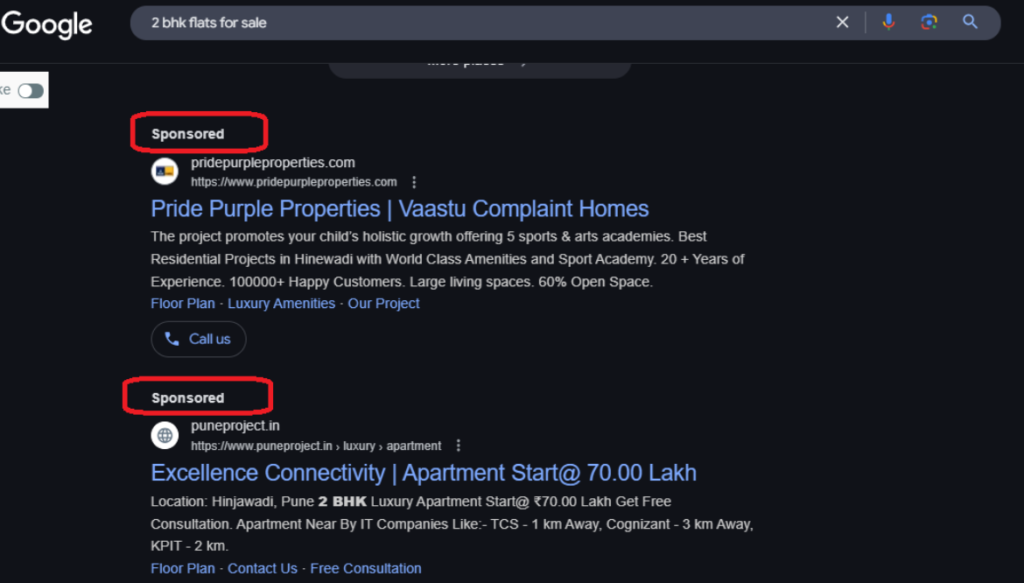
A. Search Ads:
These are ads that appear at the top of search engine results, marked with a “Sponsored” label.
B. Location:
They show up when you search for something specific, like a product or service.
C. Content:
The ad description explains what the product or service is about in a simple and clear way.
D. Purpose:
These ads aim to grab attention and encourage people to click and learn more or make a purchase
2. Display Ads:
- Appear as images or banners on websites or apps.

Where It Appears:
- Display ads are typically shown on websites that are part of Google’s Display Network or on apps, not directly in search results.
3. Social Media Ads:
- Run on platforms like Facebook, Instagram, LinkedIn, and Twitter.
- Highly customizable based on audience demographics.
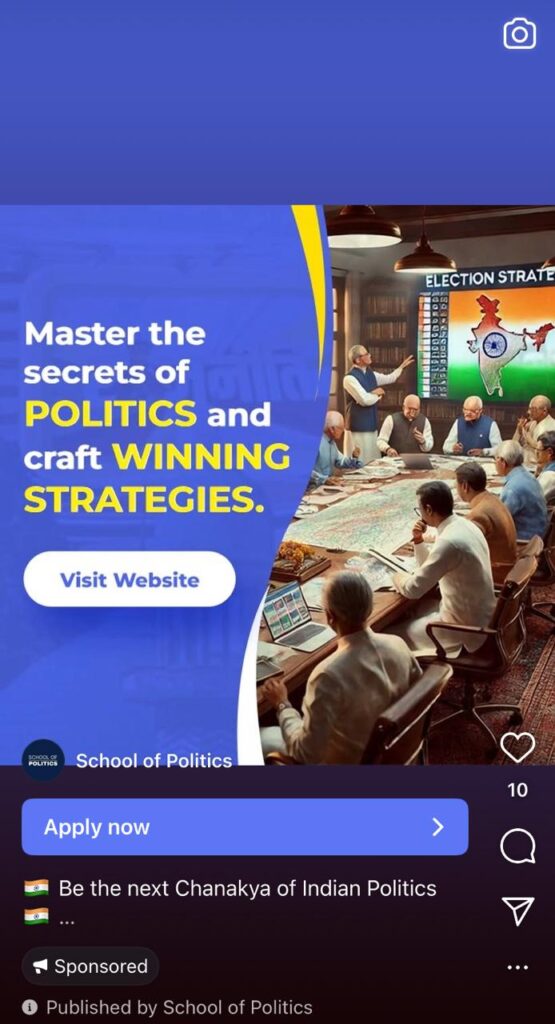
Why Social Media Ads are so preferable:
A. Targeted Audience:
Social media platforms offer advanced targeting based on interests, demographics, and behavior.
B. Wide Reach:
They can reach millions of active users across platforms like Facebook, Instagram, LinkedIn, and Twitter.
C. Engagement:
Social media ads can drive higher engagement through likes, comments, shares, and clicks.
D. Visual Appeal:
Ads with images, videos, and interactive elements are more engaging and attention-grabbing.
E. Cost-Effective:
They can be scaled to fit any budget, making them ideal for small businesses and large enterprises alike.
F. Real-Time Analytics:
Advertisers can track ad performance in real-time and make adjustments instantly.
4. Shopping Ads:
- Ideal for e-commerce businesses.
- Display product images, prices, and descriptions on search engines.
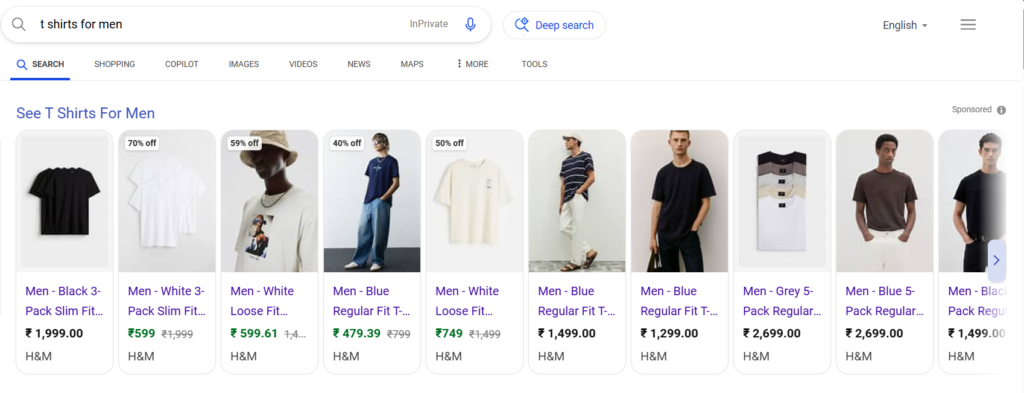
Shopping Ads for Men’s T-shirts:
A. Search Query:
“Men’s t-shirt”
B. Shopping Ad Appearance:
- Ad Type:
A row of images showing different men’s t-shirts, with prices and store names.
Details:
Image:
A picture of a t-shirt.
Title:
“Men’s Casual T-shirt – Blue”
Price:
500/-
Store Name:
“Brand X Store”
Link:
Clicking the ad takes the user directly to the product page.
5. Video Ads:
- Run on platforms like YouTube.
- Highly engaging and effective for brand storytelling.
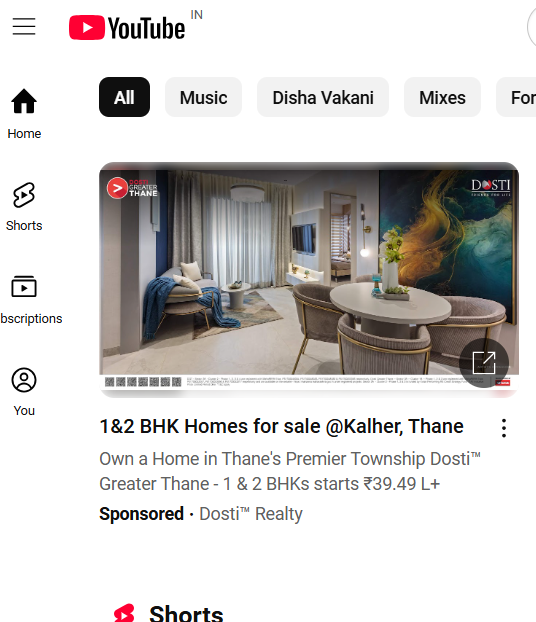
Here are some reasons why video ads are preferable:
A. Increased Engagement:
Videos are more captivating than text or image ads, leading to higher user interaction.
B. Better Storytelling:
Videos allow brands to tell a compelling story, building an emotional connection with the audience.
C. Visual & Auditory Appeal:
The combination of visuals, sound, and motion makes videos more memorable and impactful.
D. Higher Conversion Rates:
Well-crafted video ads can drive stronger calls to action, leading to higher sales or sign-ups.
6. Retargeting Ads:
- Target users who have previously visited your website.
- Helps convert interested users into customers.
Let’s understand how Retargeting ad works:
A. Situation:
You visited an online store for shoes but didn’t buy anything.
B. Retargeting Ad:
A few days later, you see an ad on Facebook or Instagram showing the exact pair of shoes you looked at, with a message like:
“Still thinking about those shoes? Get 10% off on your first purchase!”
C. Goal:
The ad reminds you of the product, offers an incentive (the discount), and encourages you to complete the purchase.
How Much Does PPC Advertising Cost? Discover the Factors That Affect Your Ad Budget
Keyword Competition:
Keywords with higher demand cost more (e.g., legal or insurance terms).
Ad Platform:
Costs vary between platforms like Google Ads, Facebook, and LinkedIn.
Geography:
Ad costs are higher in competitive markets.
Quality Score:
Ads with better relevance and engagement have lower costs per click.
Example: On Google Ads, the average cost per click ranges from ₹75 to ₹150 for most industries, but in competitive sectors like legal services, the cost can go up to ₹3,750+ per click.
Easy Steps to Launch Your Pay-Per-Click Advertising Campaign for Success
Set Clear Goals:
- Decide whether you want to drive traffic, generate leads, or boost sales.
- Example: “Increase website traffic” or “Boost sales of a specific product.
Let’s take the example of a small coffee shop, Brew Bliss, launching its first PPC campaign to attract more customers.
- Brew Bliss wants to increase foot traffic to their store and grow online orders for their specialty coffee beans.
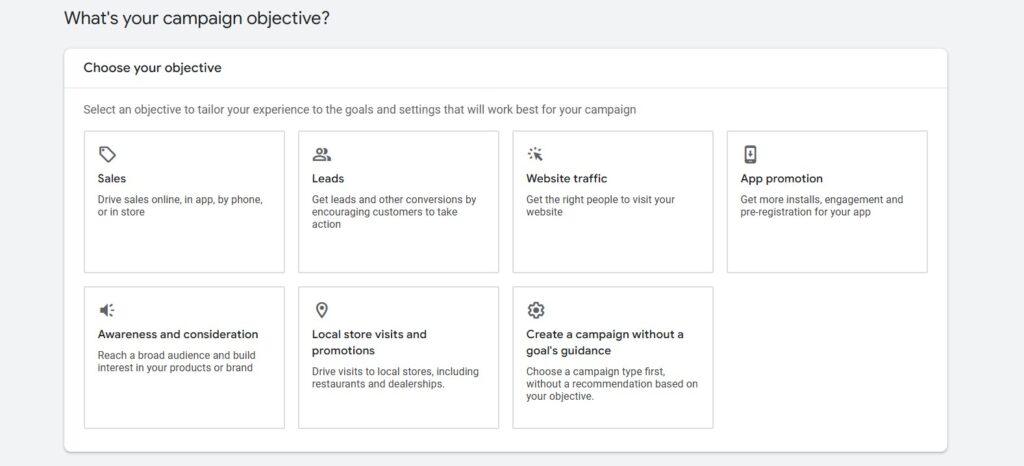
2. Choose the Right Platform:
- Pick platforms where your target audience is most active.
- Example: Decide whether to run ads on Facebook, Instagram, Google, or YouTube based on where your target audience spends their time.
- Since their audience is local and active on social media, Brew Bliss chooses Google Ads for search visibility and Instagram Ads for reaching coffee enthusiasts.
3. Conduct Keyword Research:
- Use tools like Google Keyword Planner,SEMrush, Ahrefs, or Ubersuggest to find relevant and cost-effective keywords.
- They use simple tools like Google Keyword Planner to discover keywords like “best coffee near me,” “specialty coffee beans,” and “local coffee shop.”
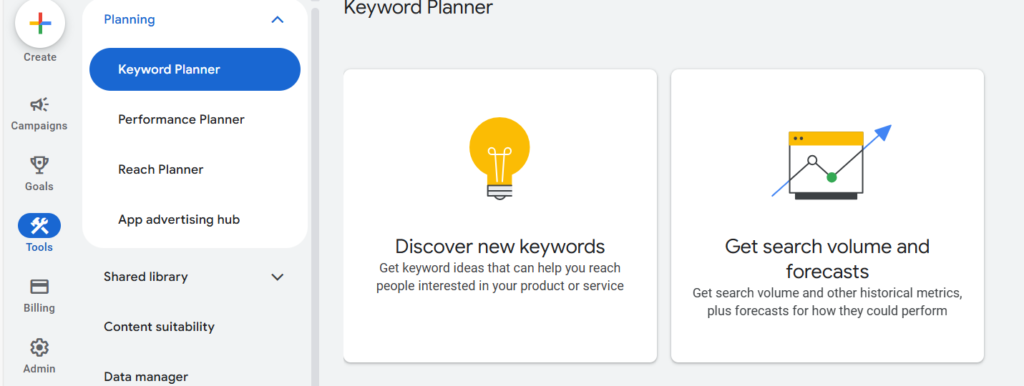
4. Create Engaging Ads:
- Craft compelling ad copy with a clear headline, description, call to action (CTA) and landing page URL.
- Make sure your keywords are included in the ad text.
- Brew Bliss creates an engaging ad headline: “Award-Winning Coffee Near You!” with a description: “Order our specialty beans or visit us today for your perfect brew.”
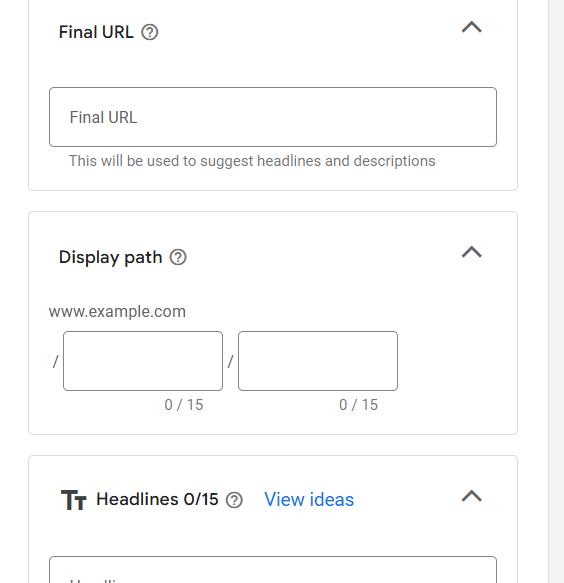
5. Set a Budget:
Allocate a daily or monthly budget that aligns with your goals.
Example of Setting a PPC Budget:
Goal:
Increase website traffic.
Daily Budget:
₹500 per day.
Cost per Click (CPC):
₹20 per click.
Estimated Clicks:
25 clicks per day (₹500 ÷ ₹20).
Monthly Budget:
₹15,000 (₹500 x 30 days).
This budget helps you get steady traffic without spending too much, while also giving you the flexibility to adjust and improve based on how the ads perform.
- Brew Bliss set a daily budget of ₹1,600 for their search ads and ₹1,200 for social media ads, ensuring their campaign stays affordable.
6. Monitor and Optimize:
How to monitor and optimize an ad campaign:
A. Track Performance:
Regularly check metrics like clicks, impressions, and conversions to see how the campaign is doing.
B. Check Cost-Effectiveness:
Monitor cost-per-click (CPC) or cost-per-conversion to ensure you’re getting value for your money.
C. A/B Testing:
Test different versions of your ad (like headlines or images) to see which one performs better.
D. Adjust Budget:
If an ad is performing well, consider increasing its budget. If it’s underperforming, reduce it.
E. Refine Targeting:
Based on performance, adjust your audience targeting (age, location, interests) to improve results.
F. Improve Ad Creative:
If your ad isn’t engaging enough, try changing the visuals or message to make it more attractive.
G. Optimize Timing:
Identify when your audience is most active and schedule your ads to run during peak times.
- Brew Bliss monitors which keywords and ads get the most clicks. They notice that “specialty coffee beans” performs best, so they adjust their budget to focus more on this keyword.
By following these steps, Brew Bliss effectively reaches coffee lovers and increases both in-store visits and online orders.
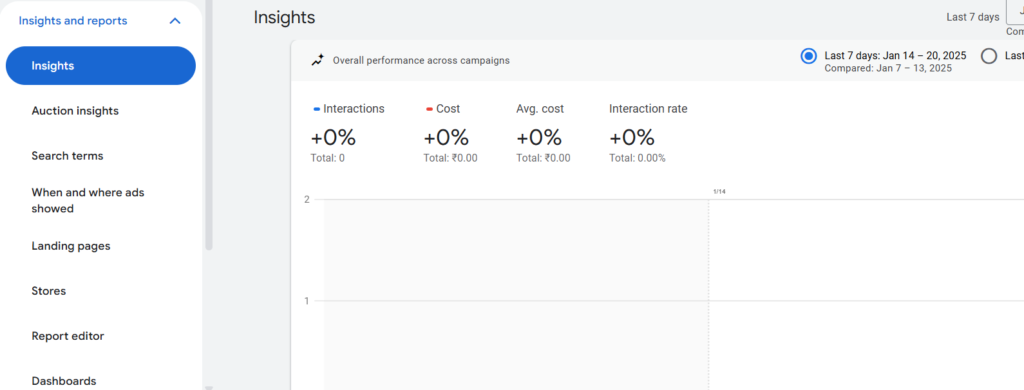
Common Mistakes to Avoid
1. Skipping Research:
Choosing the wrong words can waste money. Always find the best ones for your ads.
2. No Budget Limit:
Without setting limits, you might spend more than planned. Always set a daily or monthly cap.
3. Using One Ad Only:
Running just one ad limits your chances. Test a few to see what works best.
4. Ignoring Irrelevant Clicks:
Show your ads only to the right people by excluding unrelated words.
5. Bad Web Pages:
Sending people to a page that doesn’t match the ad can lose customers. Make sure your page is useful and easy to use.
6. Not Checking Performance:
Ads need regular attention. Ignoring them can waste money.
7. Forgetting Mobile Users:
Many people use phones to click on ads. Make sure your ads and website work well on mobile devices.
How PPC Ads Help Small Businesses Compete with Big Brands
Pay-per-click (PPC) ads can be a great way for small businesses to compete with big brands without spending a lot of money. Here’s how:
1. You Only Pay for Results
With PPC ads, you only pay when someone clicks on your ad. This means you’re spending money on people who are actually interested in what you offer.
2. Reach the Right People
You can show your ads to the exact group of people who are looking for products or services like yours. For example, if you own a bakery, you can target people searching for “fresh bread near me.”
3. Appear Next to Big Brands
When you run PPC ads, your business can show up on search engines like Google, right next to big brands. This gives you a chance to attract customers, even if your company is smaller.
4. Stay Within Your Budget
You don’t need a huge budget to start. PPC ads let you set daily or monthly spending limits, so you’re always in control of how much you spend.
5. Quick Results
Unlike other marketing methods that take time, PPC ads can start bringing you traffic and customers almost immediately.
6. Highlight Your Strengths
Small businesses have unique benefits, like personalized service or local expertise. Use PPC ads to tell customers what makes you special.
In short, PPC ads allow small businesses to compete with big brands by giving them a chance to reach the right audience, stay within their budget, and showcase what makes them unique.
Conclusion
PPC advertising is a powerful tool for getting your business noticed online, helping you reach the right people at the right time. Whether you’re looking to drive more traffic, generate leads, or increase sales, PPC offers a quick and measurable way to achieve your goals. So, why wait? Start your PPC journey today and watch your business grow! Let us help you create ads that work and bring you the results you’ve been dreaming of.
Ready to grow your business with PPC? Let’s create ads that get results! Contact us today to start your journey.
You can track your PPC campaign’s performance using detailed analytics that show metrics like clicks, impressions, conversions, and ROI. This data helps you make informed adjustments to improve your ads.
PPC ads can generate immediate traffic once your campaign is live. However, for the best results, you may need to fine-tune your ads over time to ensure they’re reaching the right audience and providing a good return on investment.
Yes, it’s important to monitor your campaigns regularly to ensure they’re performing well. Adjusting keywords, ad copy, and budgets as needed can help optimize results and reduce costs.
You can run PPC ads on search engines like Google, social media platforms like Facebook and Instagram, e-commerce sites, YouTube, and more. The choice depends on where your audience is most active.

